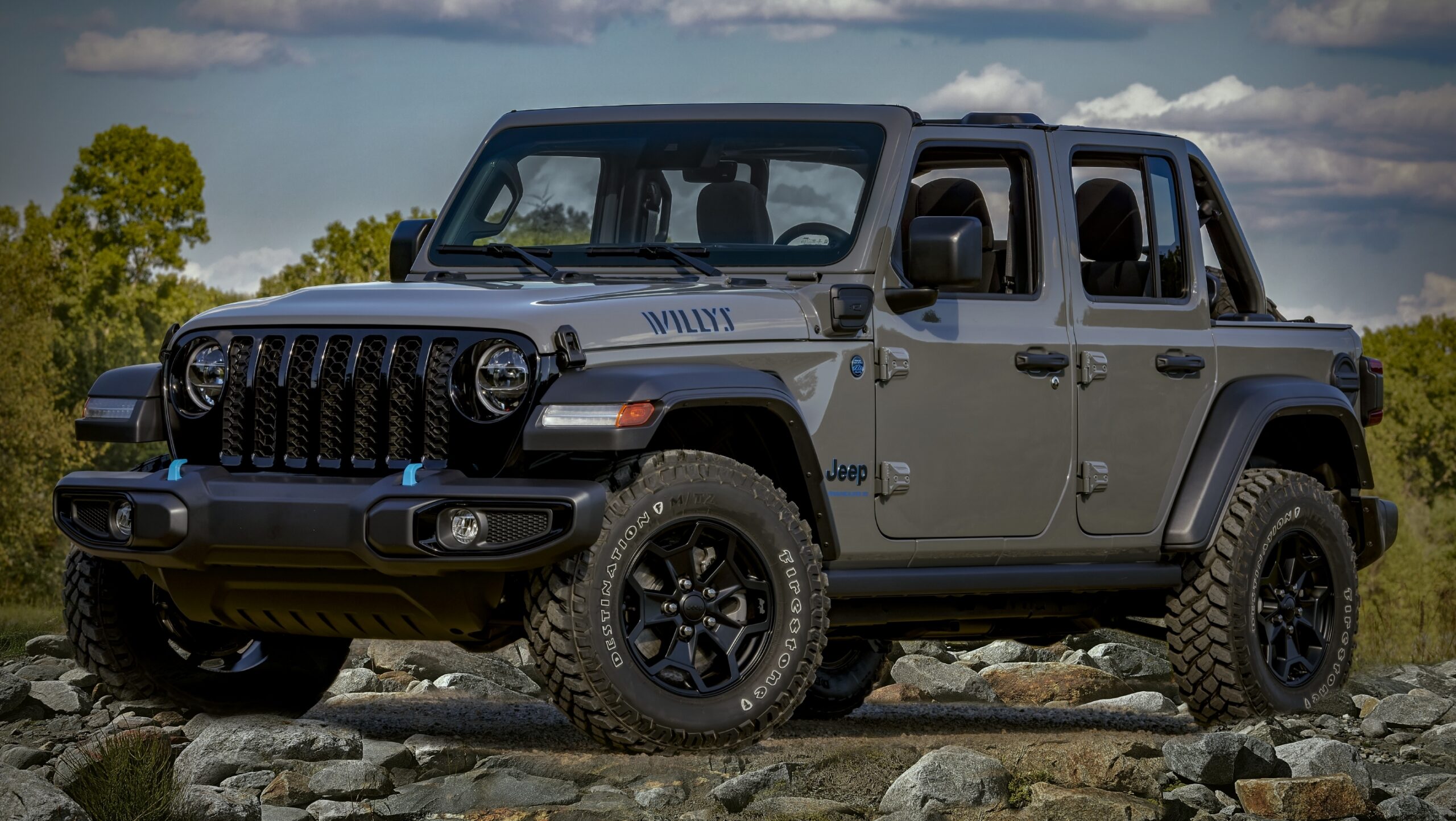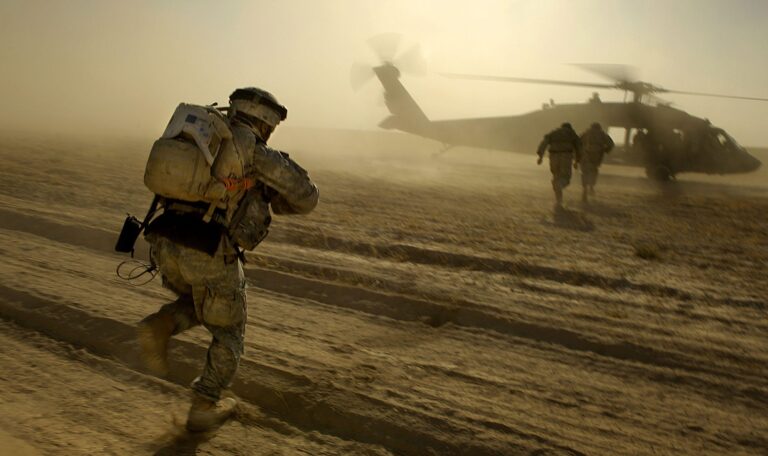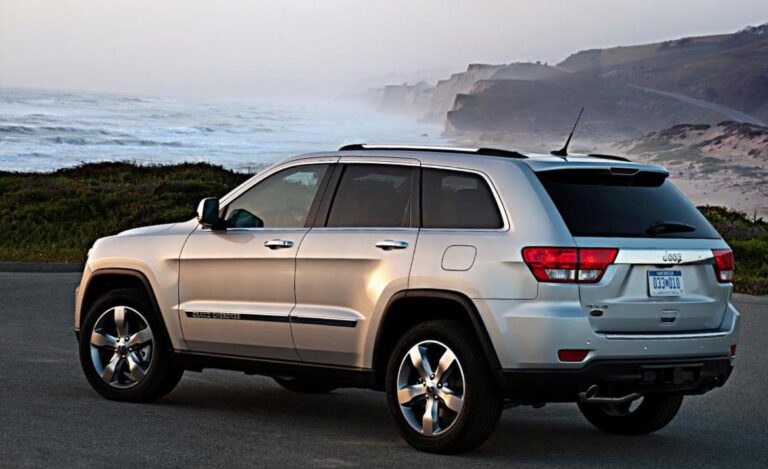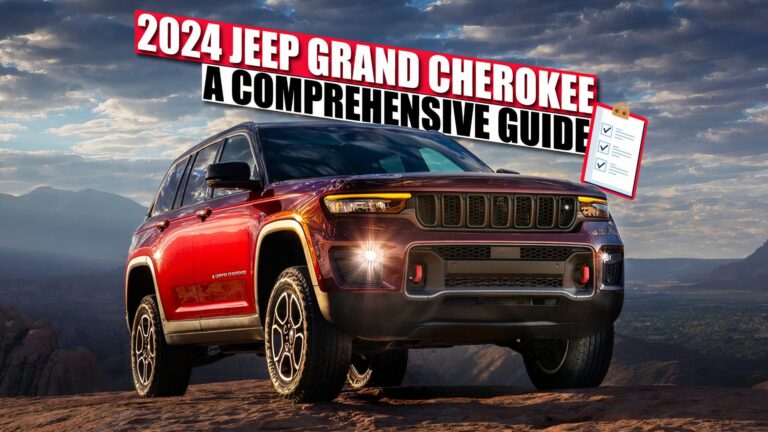Jeep Military For Sale: A Comprehensive Guide to Owning a Piece of History
Jeep Military For Sale: A Comprehensive Guide to Owning a Piece of History jeeps.truckstrend.com
The rumble of a vintage engine, the unmistakable silhouette, the whisper of battles long past – for many enthusiasts, the idea of a "Jeep Military For Sale" isn’t just about acquiring a vehicle; it’s about owning a tangible piece of history. These rugged, utilitarian machines, born from the crucible of global conflict, transcend mere transportation. They are icons of American ingenuity, symbols of freedom, and testaments to unparalleled durability. From the muddy battlefields of World War II to the jungles of Vietnam, military Jeeps have served with distinction, earning their legendary status. Today, they represent a unique opportunity for collectors, off-road adventurers, and history buffs to connect with a storied past. This comprehensive guide will delve into everything you need to know about finding, purchasing, and owning one of these remarkable vehicles.
The Enduring Legacy: Why Buy a Military Jeep?
Jeep Military For Sale: A Comprehensive Guide to Owning a Piece of History
The allure of a military Jeep stems from a blend of historical significance, raw utility, and undeniable charm. Unlike modern vehicles designed for comfort and convenience, these machines were built for a singular purpose: to get the job done, no matter the terrain or conditions.
- Historical Significance: Owning a military Jeep is like owning a mobile museum exhibit. Models like the Willys MB and Ford GPW are synonymous with the Allied victory in WWII, while the M38 and M151 MUTT played crucial roles in subsequent conflicts. Each dent, each patch of original paint, tells a story of service and survival.
- Unmatched Durability and Reliability: Engineered for the harshest environments, military Jeeps boast robust construction, simple mechanical systems, and an inherent ability to withstand punishment. Their design prioritizes functionality and ease of field repair, making them surprisingly resilient even decades later.
- Unique Driving Experience: Forget power steering, automatic transmissions, and air conditioning. Driving a military Jeep is an visceral experience. It connects you directly to the machine and the road (or lack thereof). It’s a testament to a bygone era of pure, unadulterated motoring.
- Collector’s Item and Investment Potential: Well-maintained or professionally restored military Jeeps, particularly the rarer WWII-era models, can appreciate in value. They are not just vehicles; they are sought-after collector’s items that represent a tangible link to pivotal moments in world history.
- Off-Road Prowess: At their core, these vehicles were designed for extreme off-road capability. Their lightweight design, high ground clearance, short wheelbase, and robust 4×4 systems make them formidable machines on trails, farms, or any challenging terrain.
- Community and Customization: Owning a military Jeep opens doors to a vibrant community of enthusiasts. From military vehicle shows to online forums, there’s a wealth of knowledge and camaraderie. Furthermore, many owners enjoy the process of restoring their Jeeps to original specifications or even customizing them for modern use.

Identifying Your Desired Warhorse: Types of Military Jeeps
The term "military Jeep" encompasses several distinct models, each with its own history, characteristics, and market value. Understanding these differences is crucial for any potential buyer.
- Willys MB / Ford GPW (World War II Era, 1941-1945): This is the original "Jeep" – the iconic vehicle that helped win WWII. Willys-Overland Motors produced the MB, and Ford Motor Company produced the nearly identical GPW under license. They are characterized by their flat fenders, exposed headlights, and simple, rugged design. These are the most historically significant and often the most valuable. Key features include a 60 hp "Go Devil" L-head engine, a 3-speed manual transmission, and a 6-volt electrical system. Finding an original, unrestored example is rare and highly prized.
- Willys M38 (Korean War Era, 1950-1952): Based on the civilian CJ-3A, the M38 incorporated several military-specific enhancements. These included a stronger frame, a waterproof 24-volt electrical system (allowing for deep water fording), a cowl-mounted blackout driving light, and a taller windshield. Visually, it closely resembles its WWII predecessor but offers improved robustness for field operations.
- Willys M38A1 (Korean War to Vietnam Era, 1952-1971): A significant departure in design, the M38A1 introduced a rounder, more modern body style, often referred to as the "round fender" Jeep. It featured a more powerful "Hurricane" F-head engine and retained the 24-volt electrical system and other military enhancements. Its longer wheelbase improved stability, and it served extensively in the Korean and early Vietnam Wars, as well as with various NATO forces.
- Ford M151 MUTT (Military Utility Tactical Truck, Vietnam Era, 1959-1982): The M151 was a revolutionary design, moving away from the traditional body-on-frame construction to a unibody chassis with independent suspension on all four wheels. This provided superior ride quality and off-road articulation. The M151 series (M151, M151A1, M151A2) served through the Vietnam War and beyond, eventually replaced by the HMMWV (Humvee). Due to its independent rear suspension design, early M151s had a tendency to "tuck under" during hard cornering if not driven correctly, leading to some rollover incidents. Later A2 models improved this with a redesigned rear suspension. Many M151s were "demilitarized" (crushed) by the U.S. government to prevent their sale to civilians, making fully intact, titled examples highly sought after and often more expensive, particularly in certain states.
Navigating the Market: Where to Find Military Jeeps For Sale
The search for a military Jeep can be an adventure in itself. Here are the most common avenues for finding your ideal historical vehicle:
- Online Marketplaces: Websites like eBay Motors, Craigslist (use caution and local pickup), and specialty classic car listing sites (e.g., Hemmings, Bring a Trailer) often feature military Jeeps. Be wary of scams and always verify the seller’s legitimacy.
- Government Surplus Auctions: Agencies like GovPlanet and GSA Auctions frequently sell surplus military equipment, including Jeeps that have been retired from service. These can range from heavily used "project" vehicles to surprisingly well-preserved examples. Be aware that many M151s sold through these channels were demilitarized and may not be street legal without significant work or specific state titling laws.
- Specialty Military Vehicle Dealers: Several reputable dealers specialize exclusively in military vehicles. They often source, restore, and sell a wide range of models, providing expertise, higher quality inventory, and sometimes even warranties (though limited for vintage vehicles).
- Military Vehicle Shows and Swap Meets: These events are treasure troves for enthusiasts. You can see vehicles in person, talk to owners, and often find private sellers. It’s an excellent way to learn, network, and potentially find your dream Jeep.
- Online Forums and Clubs: Joining dedicated military vehicle forums (e.g., G503.com for WWII Jeeps) or local historical military vehicle clubs can provide leads for private sales and invaluable advice from experienced owners.
The Purchase Process: What to Look For and How to Buy
Buying a vintage military Jeep requires diligence and a keen eye. It’s not like buying a modern used car.
- Condition is Key:
- Frame and Body Rust: This is the most critical factor. Inspect the frame rails, floorboards, hat channels, and body tub for extensive rust, rot, or shoddy repairs. Rust on the frame can be a deal-breaker or require costly professional intervention.
- Engine and Drivetrain: Check for fluid leaks, listen for unusual noises, and assess the overall condition of the engine, transmission, transfer case, and axles. A non-running vehicle might be a cheaper entry point, but factor in potential rebuild costs.
- Electrical System: Military Jeeps typically have 6-volt (Willys MB/GPW) or 24-volt (M38/M38A1/M151) systems. Ensure all lights, gauges, and accessories work. Rewiring can be time-consuming and expensive.
- Originality vs. Restoration: Decide if you want a historically accurate, numbers-matching vehicle (more valuable for collectors) or a restored one that might have modern upgrades. A poorly restored Jeep can hide more problems than an honest, unrestored "barn find."
- Documentation: Ensure the vehicle comes with a clear title and a bill of sale. Some older military vehicles might only have a bill of sale, which can complicate titling in certain states. For M151s, verify that it’s a "civilian titled" vehicle and not one that was demilitarized.
- Professional Inspection: Unless you’re a seasoned mechanic specializing in vintage military vehicles, it’s highly advisable to have a third-party expert inspect the Jeep before purchase.
- Test Drive: If possible, drive the Jeep. Listen for odd noises, check steering play, brake effectiveness, and general drivability. Remember, these vehicles drive very differently from modern cars.
- Pricing Factors: Prices vary widely based on model rarity, condition (project vs. running driver vs. concourse restoration), historical provenance, and market demand. A WWII Willys MB in excellent condition will command a much higher price than a rusty M38A1 project.
- Negotiation: Be informed about current market values. Don’t be afraid to negotiate, especially if you find issues during your inspection.
Ownership Considerations: Beyond the Purchase
Owning a military Jeep is a commitment that goes beyond the initial purchase price.
- Maintenance and Parts: These vehicles require regular maintenance, often more hands-on than modern cars. While many parts (especially for Willys models) are surprisingly available through specialty vendors (new old stock or reproduction), some specific components, particularly for M151s, can be harder to source. A basic understanding of mechanics is a huge asset.
- Registration and Legality: Registering a military Jeep for road use can vary by state or country. You’ll need a title, and some jurisdictions might require safety inspections, emissions checks (though many older vehicles are exempt), or specific lighting modifications to meet current road standards.
- Storage: Protect your investment. Military Jeeps are best stored indoors, away from the elements, to prevent rust and preserve their condition.
- Insurance: Standard auto insurance policies may not cover vintage military vehicles adequately. Look into specialty classic car or antique vehicle insurance, which often offers better coverage for agreed-upon value and specific use limitations.
- Driving Experience: Be prepared for a raw driving experience. No power steering or brakes, manual transmission, and limited top speeds (especially for WWII models). They are not designed for highway cruising but excel on back roads and off-road trails.
Restoration vs. Preservation vs. Customization
Once you own a military Jeep, you’ll face decisions about its future:
- Restoration: This involves bringing the vehicle back to its original factory specifications, often to a show-quality standard. This is a meticulous, expensive, and time-consuming process requiring specialized knowledge and parts. The goal is historical accuracy.
- Preservation: This approach focuses on maintaining the vehicle in its current, often original, condition. Repairs are made to keep it functional, but cosmetic blemishes or signs of age are embraced as part of its history. This is often more cost-effective than full restoration.
- Customization/Restomod: Some owners choose to modernize their military Jeeps by installing updated engines (e.g., a modern inline-four or V6), power steering, disc brakes, or more comfortable seating. While this sacrifices originality, it can make the vehicle more practical for regular use. Be aware that extensive modifications can significantly reduce its historical value.
Estimated Price Range Table for Military Jeeps
Please note: These are estimated price ranges and can vary wildly based on specific model year, historical provenance, modifications, market demand, and geographical location. Always factor in potential shipping, maintenance, and restoration costs.
| Model | Condition: Project (Non-Running, Heavy Rust) | Condition: Running Driver (Fair Condition, Needs Work) | Condition: Restored (Excellent, Show-Quality) |
|---|---|---|---|
| Willys MB/Ford GPW | $8,000 – $18,000 | $20,000 – $40,000 | $45,000 – $80,000+ |
| Willys M38 | $5,000 – $12,000 | $15,000 – $28,000 | $30,000 – $50,000 |
| Willys M38A1 | $4,000 – $10,000 | $12,000 – $25,000 | $28,000 – $45,000 |
| Ford M151 MUTT (A1/A2) | $6,000 – $15,000 (if titled) | $18,000 – $35,000 (if titled) | $38,000 – $65,000+ (if titled) |
(Disclaimer: Prices are approximate as of late 2023/early 2024 and are subject to market fluctuations. "Project" vehicles may require significantly more investment than their purchase price implies.)
Frequently Asked Questions (FAQ) about Jeep Military For Sale
Q1: Can I drive a military Jeep on public roads?
A1: Yes, in most cases, with proper registration, title, and insurance. You may need to ensure it meets basic safety requirements (lights, turn signals, seatbelts, etc.) for your specific jurisdiction. M151 MUTTs can be problematic in some states due to their demilitarized status; always verify state-specific titling laws.
Q2: Are parts hard to find for military Jeeps?
A2: Generally, no. For Willys MB/GPW, M38, and M38A1 models, a surprisingly robust aftermarket exists for new old stock (NOS) and reproduction parts. M151 parts can be slightly more challenging but are still available through specialty vendors and military vehicle surplus channels.
Q3: Are military Jeeps fuel-efficient?
A3: Absolutely not. They were designed for ruggedness and utility, not fuel economy. Expect single-digit to low-double-digit miles per gallon (e.g., 10-15 MPG, sometimes less).
Q4: Do military Jeeps have modern features like power steering or air conditioning?
A4: No, typically they do not. These are basic, utilitarian vehicles. Any such features would be aftermarket additions by a previous owner or part of a "restomod" project.
Q5: What’s the difference between a Willys MB and a Ford GPW?
A5: They are virtually identical vehicles built by different manufacturers during WWII. Minor differences exist, such as stamped parts (Willys-stamped vs. Ford "F"-stamped components), but they share most major parts and design.
Q6: Is a military Jeep a good daily driver?
A6: Generally, no. Their lack of modern comforts, slower speeds, manual controls, and the need for more frequent maintenance make them impractical for daily commuting. They are best enjoyed as hobby vehicles, for off-roading, or for historical displays.
Q7: What does "demilitarized" mean in relation to an M151 MUTT?
A7: The U.S. government mandated the destruction (crushing or cutting the frame into pieces) of most M151 MUTTs after their service to prevent them from falling into civilian hands or being used by foreign entities. Any M151 sold legally to civilians today would have either been one of the few exceptions allowed for private sale or was reassembled from demilitarized parts, which can lead to titling issues depending on the state. Always ensure a clear, civilian title.
Conclusion: Driving History Forward
Acquiring a "Jeep Military For Sale" is more than just a transaction; it’s an embarkation on a journey into history. These legendary vehicles offer an unparalleled blend of rugged capability, historical significance, and a unique driving experience that modern cars simply cannot replicate. Whether you’re a serious collector aiming for a pristine, numbers-matching restoration, an off-road enthusiast seeking an authentic go-anywhere machine, or simply a history buff who wants to touch a piece of the past, a military Jeep offers an incredibly rewarding ownership experience.
The path to ownership requires research, patience, and a realistic understanding of the commitment involved. But for those who embrace the challenges and appreciate the legacy, the opportunity to drive a true icon – a warhorse that helped shape the world – is an experience that transcends value and becomes a cherished part of their own story. So, do your homework, find your ideal war machine, and prepare to drive a living legend.



